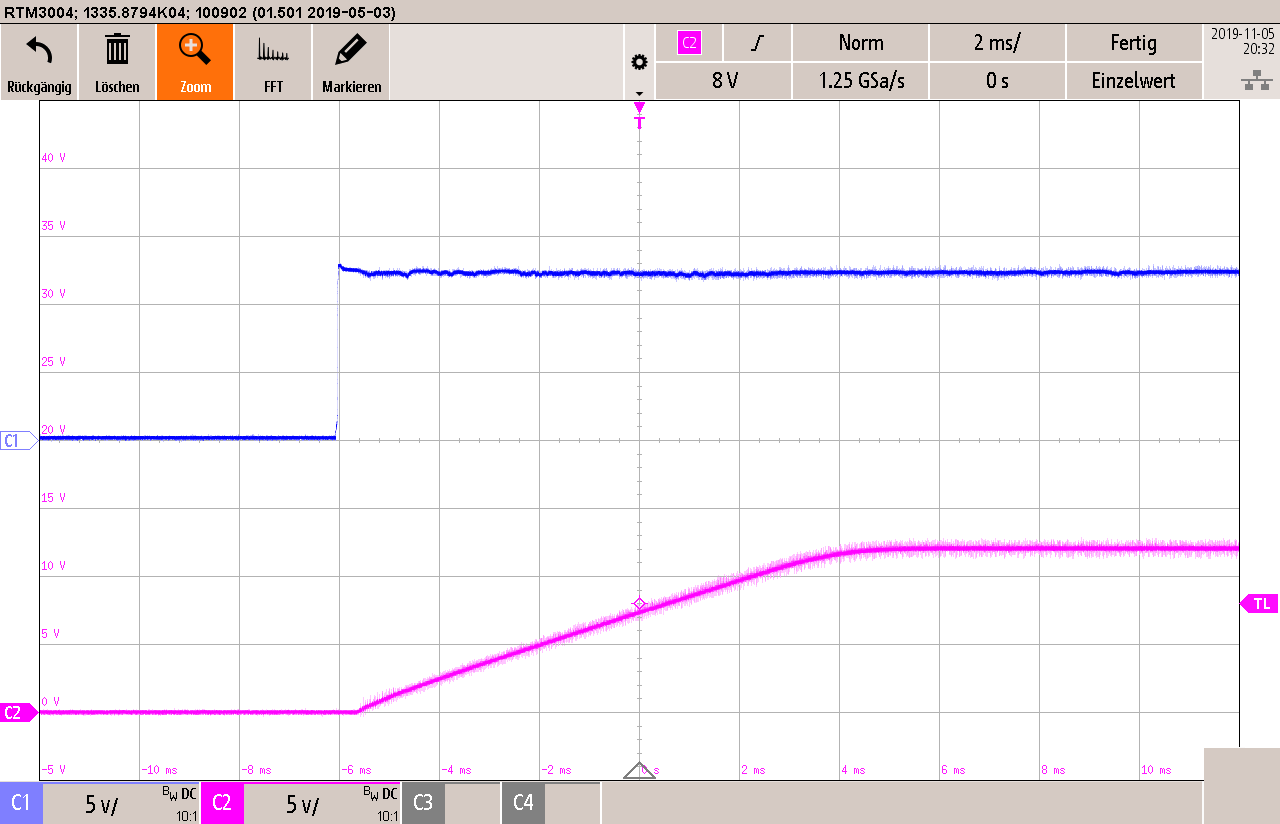TIDT286 June 2022
3.5 Start-Up Sequence
For the waveforms in this section, the electronic load was set to 2 A and the power supply was plugged in.
The soft start takes 10 ms at maximum load.

|
C1 ⇒ VIN 5 V / div C2 ⇒ VOUT 5 V / div 2 ms / div 20-MHz bandwidth |
Figure 3-13 Start-up With 12-V Input
Voltage